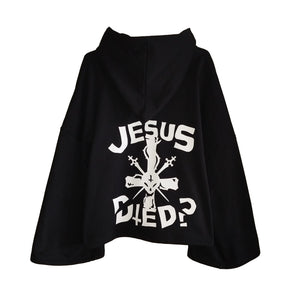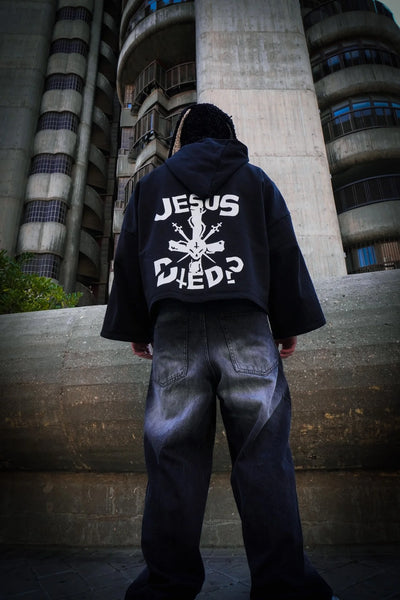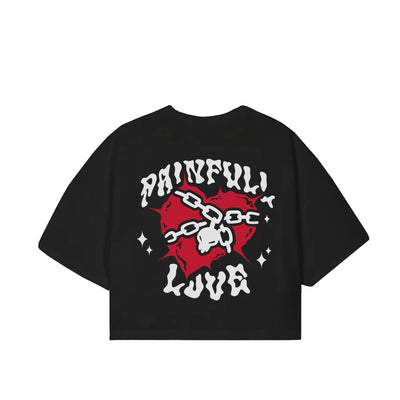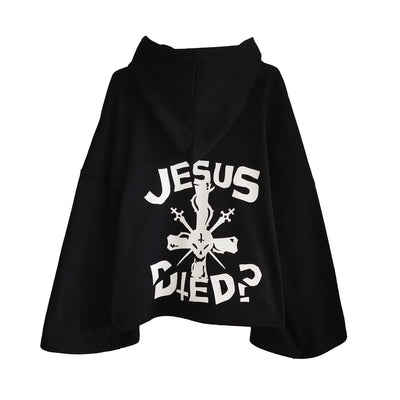Streetwear culture in Spain and the rise of independent brands
Contents
The urban fashion scene in Spain is experiencing a golden moment . A decade ago, if we thought of streetwear , we might have thought of foreign brands or typical chain stores. Today, however, Spain is creating its own streetwear culture thanks to the rise of independent brands that are sweeping the youth market. Oversized sweatshirts with Spanish messages, original designs born in neighborhoods of Madrid or Barcelona, and fan communities that feel these brands are part of their identity. What's happening in the Spanish streetwear scene and why now? Let's take a closer look.
1. From fast fashion dominance to the search for authenticity
Spain is known worldwide for fast fashion giants like Zara and Bershka, which for years set the standard for how many young people dressed: fast, affordable, and mass-market. But at the same time, a more underground movement began to grow: young designers who wanted something different, something of their own . From around 2015 onward, social media was filled with small urban clothing projects "made in Spain." At first, they were niche, but little by little they gained followers.
Why did young Spaniards start seeking out these independent brands? One reason is the search for authenticity and exclusivity . Dressing the same as everyone else is no longer cool; now many prefer to wear a sweatshirt from a local brand that few people know, rather than the same jacket that hangs in every franchise. It's a form of personal expression: "This unique T-shirt says more about me than any generic item from the mall." Plus, there's an element of supporting local and entrepreneurial talent, very much in tune with the Gen Z mentality, which values the artisanal, the indie , and the authentic.
2. A scene is born: collaborative and with local flavor
The interesting thing about streetwear culture in Spain is that it hasn't emerged from a single brand, but from many at once , and with a fairly collaborative spirit. Brands from different cities and even styles recognize each other, share followers, and inspire more people to join. For example, Nude Project paved the way by demonstrating that a Spanish brand could achieve national (and international!) fame by making sweatshirts with English messages and a global aesthetic. But other initiatives emerged in parallel:
In Barcelona , creative collectives launched brands such as Laser Barcelona or 99% (ninety-nine percent), combining local urban art with fashion.
In Madrid , in addition to Nude Project, brands such as Scuffers (with its colorful and fun aesthetic) and Fake Gods , founded in 2021, appeared. Thanks to Instagram, they created such a loyal community that people queued up at their pop-up store hours before opening, and they were even invited to churros in the morning to liven up the wait! This real anecdote shows the level of closeness and good vibes that these brands manage.
In Valencia, Seville, Bilbao... history repeats itself on a smaller scale: local entrepreneurs setting up their online T-shirt stores, using references to Spanish culture (idioms, neighborhood graffiti, icons of Spanish urban music) and finding their audience.
What's happening is that a Spanish streetwear community has emerged, where both brands and consumers interact. The founders of Eme Studios (another prominent indie brand) commented in an interview that "the rise of streetwear is due to the community itself and the emerging brands that have fostered this growth in Spain. Collaborating with each other and growing together has made this moment so special." In other words, far from seeing each other as rivals, many brands inspire each other and even collaborate on common projects. Examples include joint capsule collections or idea exchanges on social media: it's not uncommon to see Instagram live streams with two friendly brands chatting, or photoshoots where several brands share the spotlight.
3. Generation Z and the vindication of local urban fashion
Another key factor: Spanish Generation Z has embraced streetwear as part of their cultural identity . Just as in the 2000s the aspiration might have been to wear major international brands, in the 2020s an 18-year-old in Madrid may feel more identified wearing a cap from a local brand they follow on TikTok than a traditional luxury logo. There's a sense of community pride: "This is ours, made by people like us."
Social media has amplified this sentiment. On TikTok and Instagram, young people share outfits that combine various emerging Spanish brands, showcasing their unique style. YouTube and local podcasts feature these brands, creating even more buzz. Even Spanish urban artists and trap artists wear and mention these brands in their videos, giving them organic exposure. For example, it's common to see popular content creators sporting pieces from Skull Hearts, Nude Project, or Elixir Worldwide in their posts, which in turn influences their followers to become interested in them.
Streetwear culture in Spain has also taken steps toward its own events. In addition to pop-ups from individual brands, urban fashion fairs and flea markets are starting to emerge, bringing together several independent brands, creating an atmosphere similar to that of record fairs or conventions, but focused on urban clothing. It's a weekend plan for urban style lovers: go with friends, discover new brands, take photos with the craziest designs, and maybe even meet that designer you've been following on Instagram in person.
4. Skull Hearts and company: the present and future of Spanish streetwear
Brands like ours are an intrinsic part of this boom. At Skull Hearts , based in Leganés (Madrid), we exemplify how a local brand can embrace global trends (Y2K aesthetics, oversized fashion, vintage inspiration) and give them our own twist. Our mission to offer alternatives to fast fashion connects with that youthful ethic of "buy less, but better and with meaning." Like our contemporaries, we rely on social media to showcase our limited-edition collections and foster a sense of community—inviting our followers to participate in style challenges, sharing photos of customers wearing our clothes, and more.
The most exciting thing is to think about where this culture is going . Everything indicates that the rise of independent brands in Spain is not a passing fad, but rather a new way of understanding youth fashion . In the short term, we will likely see more physical stores for these brands (many started only online but are making the leap into the real world, as Nude Project did with its store in Madrid). It's also likely that new brands from different regions will emerge, bringing the personality of each area of Spain to streetwear (perhaps influences from Andalusian art, or the Canarian surfer spirit mixed with urban style? The possibilities are endless).
In conclusion, streetwear culture in Spain is being written by its own protagonists: young creators and their communities. The rise of independent brands has democratized urban fashion, making it more accessible and participatory than ever. Now anyone with creativity and desire can try their hand at launching their own brand, and anyone with a keen eye can dress in the latest trends by supporting these emerging talents. Spain is thus joining the global streetwear movement, but with an unmistakable accent and a sense of community that makes it special. And here we are, ready to continue fueling this vibrant scene with style, passion, and a whole lot of personality.






